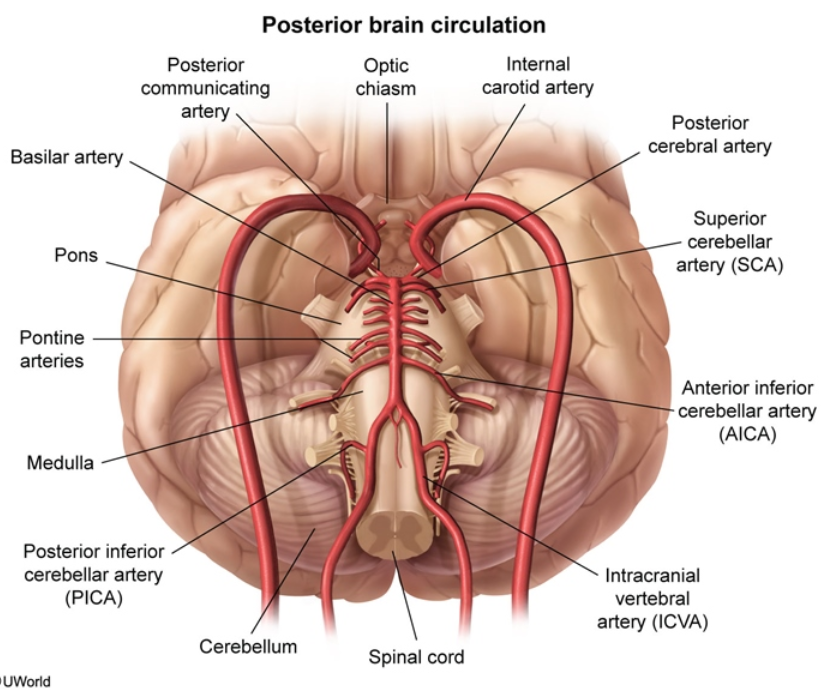brain bleed

The patient's symptoms are suggestive of a subarachnoid hemorrhage. The constellation of sudden-onset headache, nausea, and nuchal rigidity is characteristic. She demonstrates signs of right cranial nerve III (CN III) palsy (ptosis and anisocoria), a typical finding with posterior communicating artery aneurysms (about 20% of cerebral aneurysms) due to the proximity of the nerve to the artery's path. This finding can also be seen in cavernous-carotid aneurysms, but these are uncommon. The patient's history of diplopia may have been due to right CN III neuropathy (mass effect from the unruptured aneurysm).
Posterior inferior cerebellar artery aneurysms frequently result in ataxia and bulbar dysfunction.